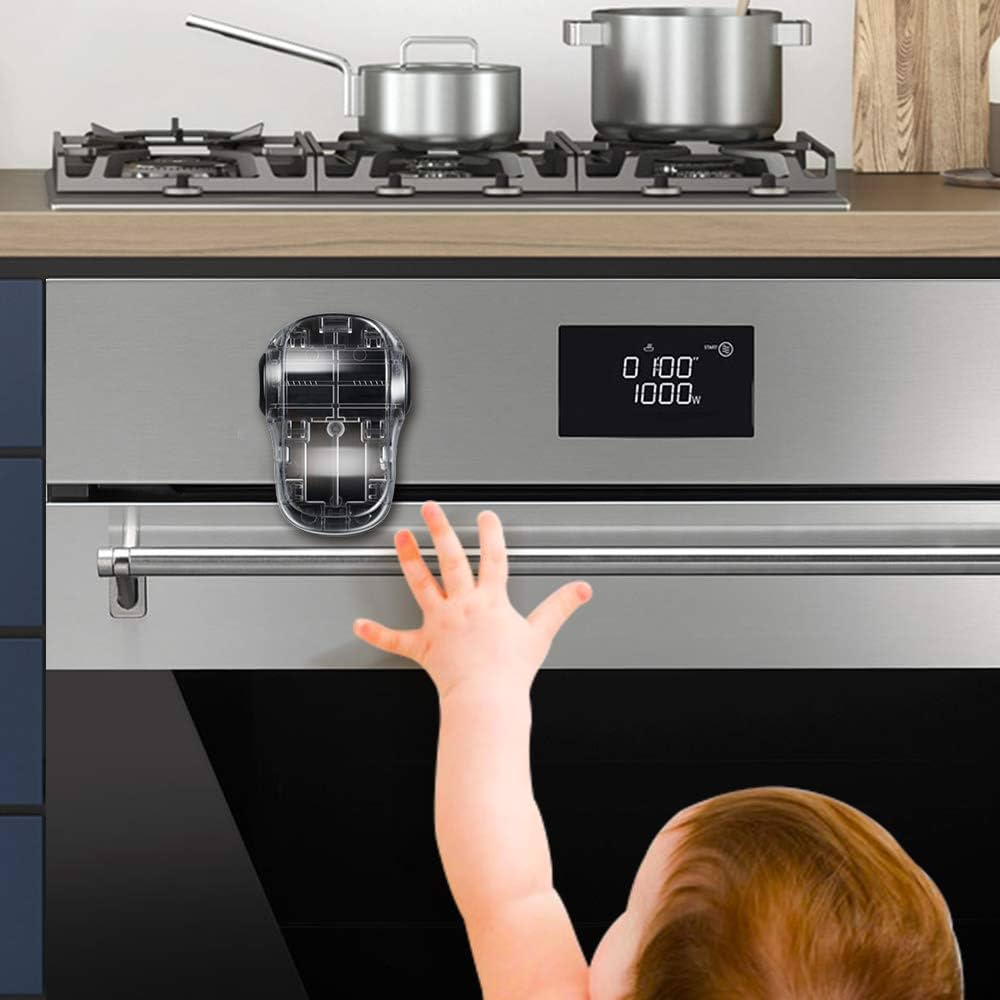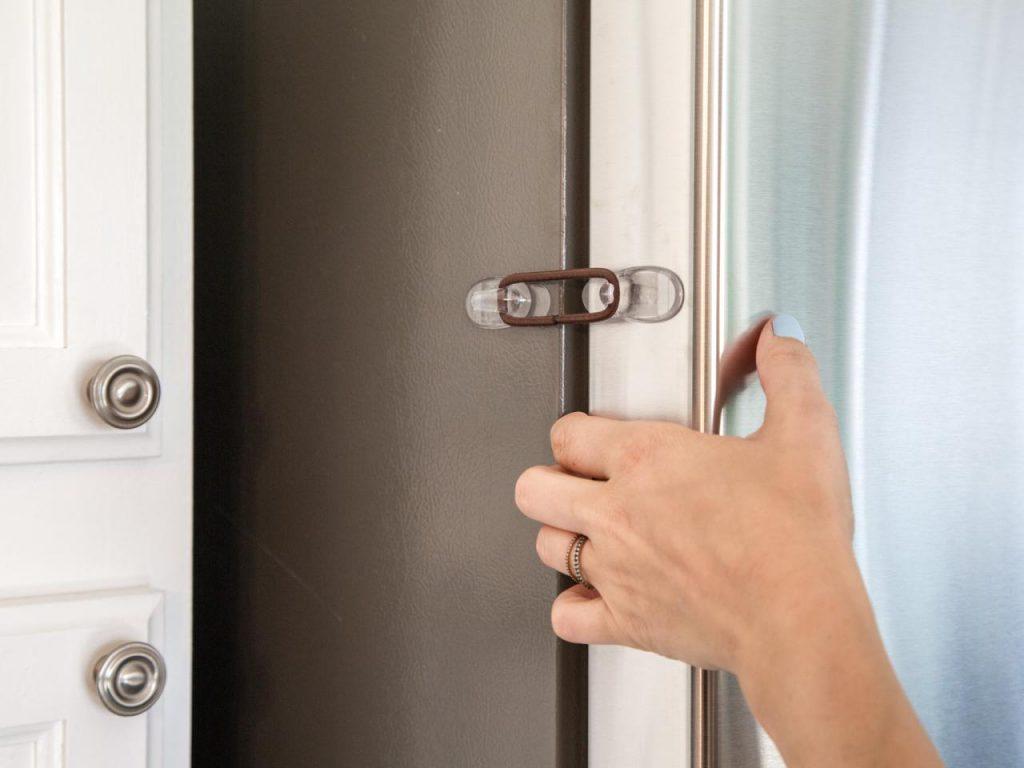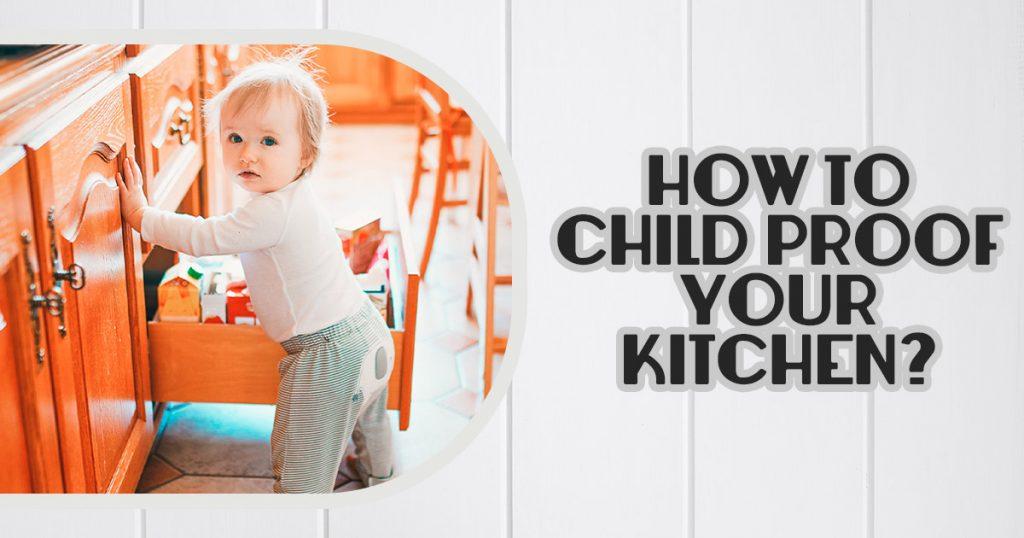The kitchen poses a significant risk for your child, particularly once they start crawling and become curious about their surroundings. While it may not always be feasible to restrict access to the kitchen entirely, especially when alone with your child, it is crucial to acknowledge the potential dangers present. By childproofing the kitchen, you can enhance the safety of the kitchen environment. Take simple steps to childproof your kitchen, and consider adapting these habits to better accommodate your new family member. Despite the effort involved, the peace of mind and enhanced safety make these changes worthwhile for your child’s well-being.
How to Babyproof the Oven Door and Stovetop
Among the various kitchen appliances, ovens and stovetops stand out as having the highest risk of causing severe and, in some cases, fatal injuries. Shockingly, more than 300 children aged 0 to 19 receive emergency room treatment for burn-related injuries daily, with two children succumbing to burns. Whether your stove and oven are distinct units or part of a single appliance, it’s crucial to prioritize child safety. Implement the following oven and stove childproofing measures to mitigate these risks:
Use an Oven Lock
As your baby becomes a toddler, their curiosity leads them to reach and grab things, and the oven door handle is a tempting choice. To avoid potential dangers, especially if your oven is within easy reach, consider installing an oven lock as a way to babyproof your oven door. This safety measure prevents your child from pulling down the door, which is crucial, especially when the oven is hot.
Never Leave the Stove Unattended
The best way to ensure your child’s safety when using the oven or stove is to never leave it unattended, as even a momentary distraction can lead to serious consequences. It’s relatively easier to monitor the stove when your baby is still unable to crawl, but as they become more mobile and curious, consider either containing them or keeping them out of the kitchen during cooking. A kitchen tower, also known as a kitchen helper or step stool, is a recommended solution for older children. Place it near the counter while you cook, and engage your child in a special cooking project to keep them occupied and safe.
Get a Stove Guard
If you enjoy cooking in the kitchen but find it challenging to keep your kids away, a stove guard could be a suitable solution. Available in various styles, the common principle is to enclose the stovetop, limiting access to individuals of a specific height. Stove guards can be made of plastic or metal grates, providing a protective barrier to keep your children safe while you cook.

Ways to Babyproof the Kitchen Refrigerator
Yes, a refrigerator can pose dangers for your child, offering both hidden hazards and the potential for mess. Particularly for older toddlers and children, there have been reports from the U.S. Consumer Product Safety Commission about suffocation incidents when children climbed inside latch fridges and freezers. When you factor in the possibility of food scattering throughout the kitchen, the situation becomes a concern. Fortunately, babyproofing your refrigerator is straightforward; just follow these five steps.
Safety Locks
To keep your fridge secure and ensure your little one doesn’t create chaos by exploring its contents, consider installing adhesive-mounted safety locks. These locks serve as a protective measure, preventing your curious toddler from opening the fridge and making a mess. By taking this simple step, you not only enhance the safety of your kitchen but also create a secure environment where your child can’t accidentally access potentially harmful items or disrupt the organized contents of the fridge.
Messy Things Should be Up High
When arranging your refrigerator, place opened packages, leftovers, and delicate containers on the upper shelves while keeping unopened and packaged items on the lower shelves to avoid any potential spills on your kitchen floor. As your kids grow and you become more confident in their ability to handle the fridge, designate the bottom shelves for convenient snacking and lunch preparation. This not only helps maintain a tidy kitchen but also adapts the fridge organization to suit the changing needs of your family over time.
Secure it to the Wall
Despite its size, your fridge is not immune to tipping over, especially if a child climbs its shelves, altering the weight balance. To avert a potential disaster, it’s crucial to anchor your fridge to the wall. While babyproofing typically involves securing items like TVs and dressers, fridges are often overlooked. Taking this simple step enhances overall home safety for your child.

How to Childproof Your Kitchen Cabinets
Your kitchen cabinets and drawers contain potentially hazardous items like knives, graters, heavy pots, and cleaning liquids—definitely not places for kids to explore. The simplest solution to keep them out of harm’s way is to use locks. Here are some tips to help you secure your kitchen cabinets effectively.
Glassware and Breakables Should be at the Top
It’s vital to keep glassware and breakable items well out of your children’s reach. Reserve the lower shelves and cabinets for items made of plastic or wood, as these materials are less likely to cause harm if accidentally dropped or handled by curious hands. Additionally, organizing your kitchen with these considerations helps instill a sense of security and order, making it easier for your child to navigate the space without the risk of encountering fragile items within their reach.
Hide Chemicals and Hazardous Substances
Ensure the safety of your little ones by keeping potent kitchen and cleaning chemicals out of their reach. Store these potentially harmful substances on the highest shelves, making it challenging for curious hands to access them. Alternatively, you can enhance safety by securing the cabinets with reliable safety locks, preventing your children from freely accessing the contents within. Taking these precautions not only protects your kids from accidental exposure to dangerous substances but also creates a secure home environment where potential risks are minimized.
Sharp Objects Should be Kept Away
Keep sharp objects like knives and forks, as well as medications, out of sight and reach. Ideally, store them in drawers or shelves that are beyond your toddler’s reach. If that’s not feasible, install safety locks on your drawers and cabinets as an extra precaution to prevent access to potentially harmful items. Taking these measures adds an extra layer of protection, making your home environment safer for your child.
Guarantee Your Child’s Safety by Childproofing Your Kitchen
Create a safe haven for your little one by implementing these easy and effective kitchen safety measures. From securing ovens with locks to anchoring fridges, organizing your kitchen with safety in mind ensures a hazard-free environment. Don’t forget the often-overlooked refrigerator; use adhesive-mounted safety locks and strategic shelving to keep potential messes and dangers at bay. Safeguard cabinets and drawers by employing locks and smart organization, placing breakables out of reach, and hiding chemicals securely. With these simple steps, you’ll not only baby-proof your kitchen but also foster a secure and worry-free space for your child to explore.
